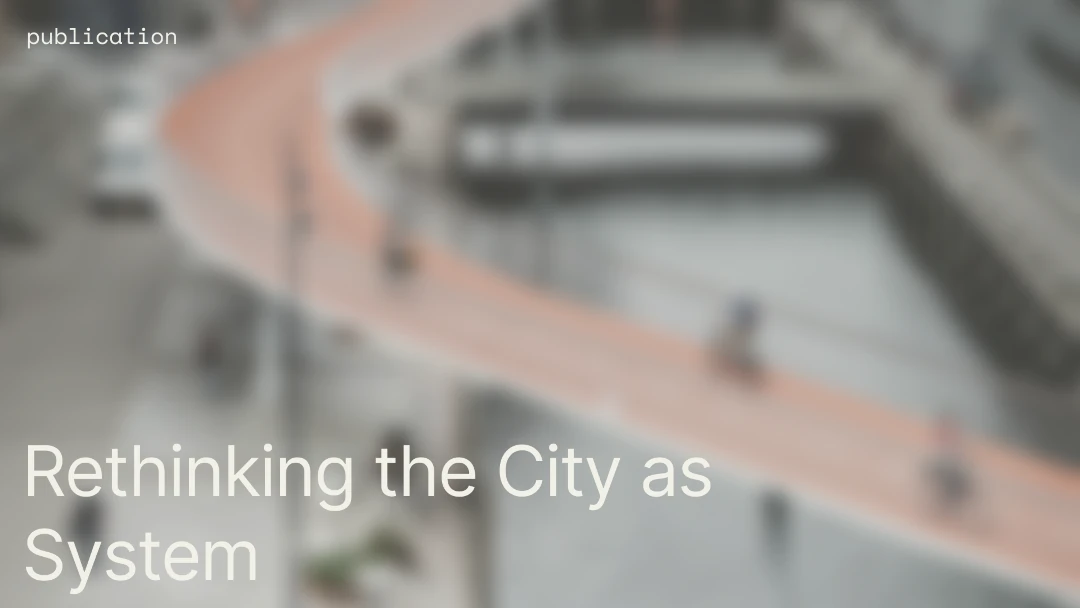
Bio
Jan Wurm is globally recognised as a leading expert for applied research and innovation in the field of sustainable building systems and materials. Based on his background as a joiner and carpenter, a Professor at KU Leuven and former Director for Research and Innovation at Arup in Europe, Jan is passionate about bridging the gap between academic research and practice in the field of regenerative design and construction.
What drives you?
With my background as a trained architect working at the interface to building engineering, I realised how important it is to build bridges between disciplines. I believe that bringing separated fields of knowledge together in a holistic and integrated approach is what enables innovation in the built environment. When I notice boundaries, I like to blur them. When I see islands, I like to connect them. Much of my career has been to build bridges between architecture and engineering, between practice and academia and more recently with my research group at KU Leuven between built and living environments. So I believe what fundamentally drives me is the integration of knowledge based on a systemic understanding of how things relate to each other.
As a professor in the area of regenerative design, what does sustainability mean to you?
Regenerative Design goes beyond the current notions of sustainability which is currently very much focused on decreasing environmental impact. Regenerative design is more aspirational and in that sense more inspiring as it seeks to create ecological gains, linking human systems with natural systems and ensuring planetary and social health as a result. To give a concrete example, when looking at biogenic materials, we are not only focusing on the amount of carbon stored and removed from the atmosphere but also at the conditions the materials are cultivated and how they relate to improve the quality of the soil, air and water systems.
Working across multiple disciplines, what are some of the main challenges today that you see are holding the industry back from moving forward?
In aspiring for a holistic and integrated built and living environment, linking sectors and domains, I think the big challenge today is the fragmentation of how we design, procure and build. To manage the high degree of complexity and involvement of more and more disciplines during the design stage, the building is dissected in parts leading often to complex supply chains, with each player having a specific scope and incentive. We need to focus on finding common grounds by establishing a clear understanding of what the building needs to do and how it can contribute to regenerative outcomes. We need shared incentives to make this transition happen, and make more effective use of digital tools to enable integrated models.
Are policies supporting this transition and what is your opinion on the progress of current regulations?
Policies have a big role to play in that transition. Currently most policies relate to specific sectors — such as construction, energy and agriculture and so on — which enhances the siloed thinking, making strategic coalitions more difficult.
Another challenge is that policies mostly focus on decreasing environmental impact on the supply side. As an example, in the automotive sector, we are changing to electric cars to cut transport related emissions. But if you look at all the resources such as rare earths or metals needed for battery systems we are facing a different challenge around extraction and processing of these critical resources . So I think moving forward policies should rather focus on the question of what we need as a society, and less on how we can do what we already do more efficiently. I think policy makers should also look on the demand side to shape more sustainable behaviours.
You work a lot within material innovation and bio based composites. How do we move towards a new material palette? And how do we make it more scalable?
Within the paradigm of a circular economy, we already see the shift towards resource efficiency in terms of understanding secondary materials and re-manufacturing waste materials. Looking at last year's report from the European Environmental Agency, we can assume that these approaches can half our material footprint in the short term. Besides this technical cycle, the natural cycle follows a constant transformation of materials — from growing, harvesting, having a use to decomposing. This notion of materials changing or evolving over time, for example in relation to the performance or appearance of a material is something which we can not capture in the current prescriptive approach in standardisation and is also not really accepted in modern architecture. Our designs are based on static structural, thermal, acoustic etc. properties to provide health and safety spaces.
Coming back to your question, I think we shouldn't aim to substitute a concrete structure with a low carbon bio-based alternative but to rethink material cycles and introduce them to all aspects of our design. Based on a bio-based material palette, how do we design differently taking into account changing properties, how to build more simply to allow vapour open constructions? How can we operate buildings differently to integrate maintenance and repair? How can we procure materials more locally or regionally taking into account variations in properties? In order to build more sustainably and in a more regenerative way, we should not just substitute one material with another one but one construction ecosystem based on global fragmented supply chains, with one rooted in regional bio-based material cultures. For this we need to reconsider the way we perceive buildings to realise the benefits of buildings changing and adopting like everything else in the living environment. I see combining traditional building materials and approaches with new technologies and a bio-based material palette as a promising way to move forward.
What should the industry look like by 2030?
Knowing how slowly things happen in the construction industry, I fear, the changes will be incremental.
I would like to see that the circular bio-economy plays a larger role in construction. This means industry for example is more interlinked and related to the agricultural sector, using secondary waste streams for making building materials. With 2-3% of the total amount, we know that at the moment, bio-based insulation materials are a niche in the entire construction sector. But looking at initiatives at the European level such as the New European Bauhaus (NEB) and the circular Bio-Based Europe Joint Undertaking (CBE JU), I think there's a growing emphasis now to develop bio-based solutions and to strengthen the circular bio-economy and to bring it into construction. With this I hope it's less about just bringing new materials into play, but to establish new supply chains across sectors by bringing the different stakeholders around bio-based materials together, from cultivation to processing, and construction to develop scalable solutions on a local, regional or European level.
I don't believe it's all going to happen in the next 6 years, but I hope that we will see by 2030 that these new supply chains are being trialled and that they are being talked about and that we are able to monitor and understand their benefits. By 2030 we will have established feasible and desirable templates for the future, ready to transition to a regenerative construction ecosystem by 2050.
What is your advice for those who strive to make changes?
I'm very hopeful for this generation of architects because of where we have come from, which has been much more regulated and strict in terms of what is right and what is wrong, what one should or shouldn't do. Today, there's a lot more fluidity and willingness to ask difficult questions and challenge the status quo. I think this inquisitive mindset of asking questions, being curious and putting research in the middle of finding answers is what we need. I see this mindset across my students today, going beyond current concepts of measuring sustainability. Going out, testing, trialling and learning by prototyping — I think that this will drive change.
.png)




























